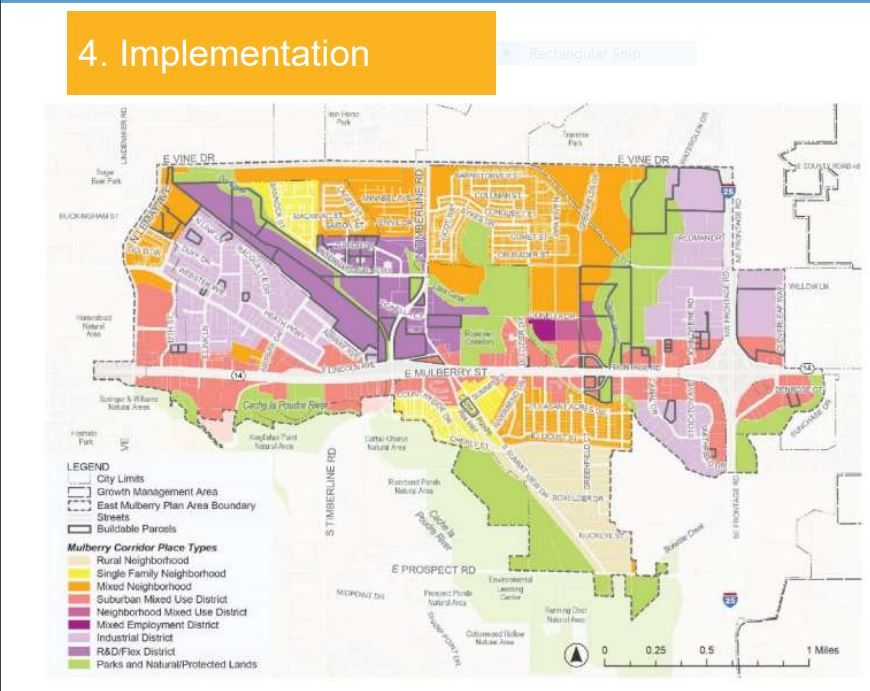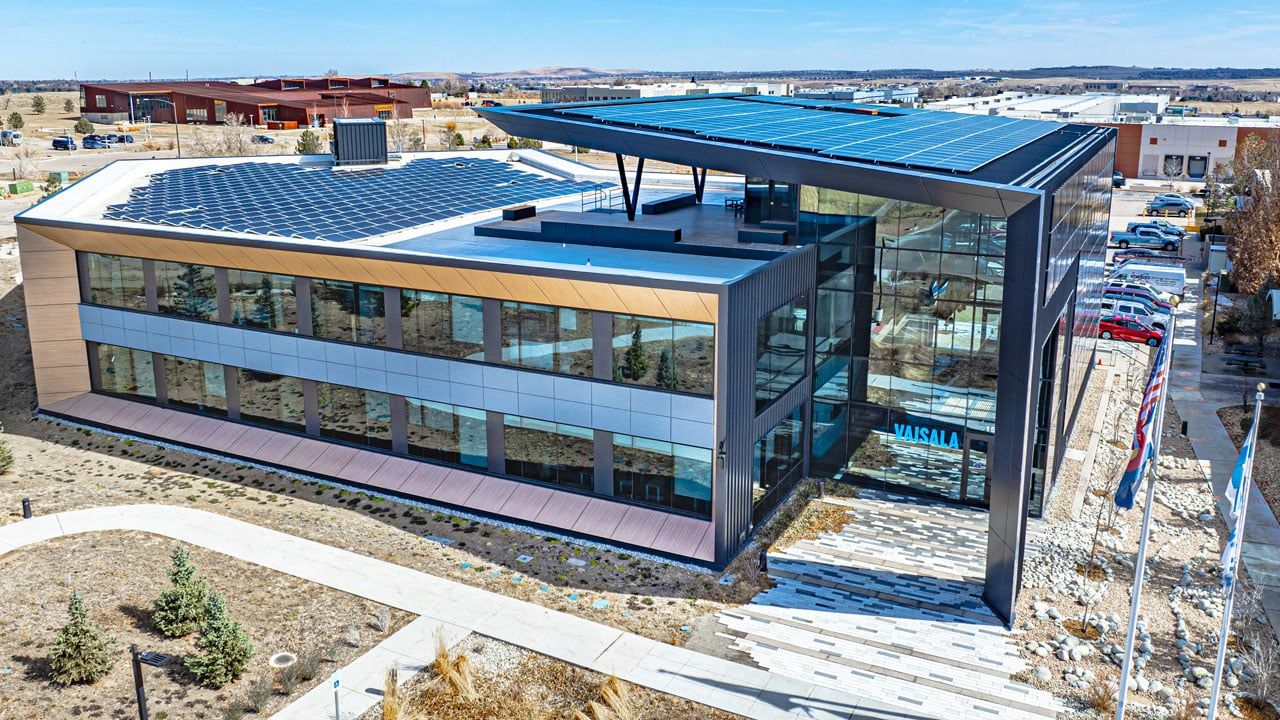Fort Collins council members question East Mulberry plan

FORT COLLINS – Members of the Fort Collins City Council gave a lukewarm reception Tuesday night to staffers’ multifaceted plan for the Mulberry Street corridor, the city’s often-neglected eastern gateway.
At a council work session in which city staffers hoped to shape an ordinance to be presented to the council for first reading on Nov. 21, senior policy manager Sylvia Tatman-Burruss and senior long-range planner Megan Keith presented a vision for upgrading the area bounded by Interstate 25 to the east, Vine Drive to the north, Lemay Avenue to the west and the Cache la Poudre River to the south to the point where it could be annexed into the city.
“The Mulberry corridor’s built environment spans multiple jurisdictions and more than 70 years of varying development standards,” the 212-page planners’ document states, and “still lacks a consistent pattern of development, and in many locations, basic health and safety infrastructure such as sidewalks, curb and gutter, and drainage networks.”
SPONSORED CONTENT
Commercial Solar is a big investment, but not an overwhelming one
Solar offers a significant economic benefit for commercial property owners while also positively impacting the environment and offering a path to compliance for new municipal requirements like Energize Denver. A local, experienced solar installer will help you navigate the complexities of commercial solar to achieve financial success for your project.
The goals for the corridor, Tatman-Burruss and Keith told council members, are:
- Foster a healthy and prosperous commercial and industrial hub for the city, while remaining viable for small businesses and industry.
- Master plan, construct and maintain stormwater infrastructure to provide safe conveyance of stormwater flows and reduce flood risk.
- Plan and support safe and comfortable infrastructure for multi-modal transportation.
- Increase access for residents and businesses to community amenities and services.
- Explore mechanisms to maintain housing affordability and the existing character of residential neighborhoods.
- Protect and promote natural, historic and cultural resources that support a cohesive and resilient community using nature-based solutions.
- Improve the function and visual appearance of Mulberry’s I-25 interchange and street frontage as a gateway into Fort Collins.
Included in the plan would be what the planners called “thresholds” for an area to qualify for annexation. “Rather than a phased approach that commits to certain timeframes and geographic boundaries,” the planners wrote, “thresholds provide more flexibility in the size and timing of the areas brought forward for annexation. This can help ensure that the city can adequately serve these areas before annexation occurs.”
Mayor Jeni Arndt asked “what do people get” along the corridor if they’re annexed into the city, and Tatman-Burruss responded that it would be up to the City Council.
According to the planning documents, “As annexation thresholds are met and portions of the East Mulberry area become annexed, some service providers would change quickly upon annexation, and some would happen over time. Some service providers would remain the same, regardless of annexation.”
Law enforcement would transfer from the Larimer County Sheriff’s Office to Fort Collins Police, the planners wrote, and electric service would transfer from Poudre Valley REA or Xcel Energy to Fort Collins Utilities once infrastructure can be built out to support it. Responsibility for storm drainage would transfer from Larimer County to the city’s stormwater utility, and most road maintenance would transfer from Larimer County Road and Bridge to Fort Collins Transportation Services.
Several things wouldn’t change with annexation, however, the planners wrote. Water and wastewater services would still be provided by Eastern Larimer County Water District and the Boxelder Sanitation District, fire protection would still be provided by the Poudre Fire Authority, health and human services would still be provided by Larimer County, and animal-control services would still be provided by the newly merged Humane Society.
The planners said much of the East Mulberry scenario was crafted using lessons learned from the city’s effort to upgrade the South College Avenue corridor, but Councilmember Susan Gutowsky asked where the funding would come from for the upgrades, City Manager Kelly DiMartino asked whether the city should “retroactively apply some of the lessons we’ve learned to South College,” Mayor Jeni Arndt speculated that North College Avenue stakeholders might want a piece of the action as well, and Councilmember Shirley Peel, echoing the equity concerns, also wondered how businesses would be able to come up to the standards the plan established.
Councilmember Kelly Ohlson took the hardest line, noting that “one person’s improvement is another person’s environmental degradation” and loss of wildlife habitat. “I’m not interested in government increasing the amount of developable land,” he said, decrying “privatizing profit while socializing costs.”
Fort Collins and Larimer County have been considering upgrades to the East Mulberry corridor since 1997, and the latest effort was meant to address changing conditions after more than two decades.
“While the overarching goal is to bring properties closer to modern standards, this must be balanced against both a proportionate level of change to the site and while being mindful of corridor goals to maintain a unique and affordable location in the community for industrial and commercial businesses,” the planners wrote. “With these goals and challenges in mind, the development-review spectrum was developed to guide future development and redevelopment activity for annexed properties within the plan area.”
FORT COLLINS – Members of the Fort Collins City Council gave a lukewarm reception Tuesday night to staffers’ multifaceted plan for the Mulberry Street corridor, the city’s often-neglected eastern gateway.
At a council work session in which city staffers hoped to shape an ordinance to be presented to the council for first reading on Nov. 21, senior policy manager Sylvia Tatman-Burruss and senior long-range planner Megan Keith presented a vision for upgrading the area bounded by Interstate 25 to the east, Vine Drive to the north, Lemay Avenue to the west and the Cache la Poudre River to the south to…
THIS ARTICLE IS FOR SUBSCRIBERS ONLY
Continue reading for less than $3 per week!
Get a month of award-winning local business news, trends and insights
Access award-winning content today!


